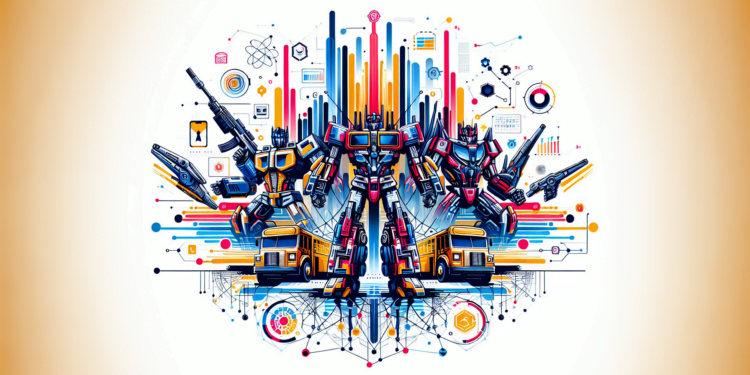Artificial intelligence (AI) is constantly evolving, marking milestones in various industries and research fields with its advancements. Recent developments in the area of transformer models are redefining the capabilities and applications of AI. These models, known for their efficiency in natural language processing tasks, are now at the forefront in the quest for more general and adaptable artificial intelligences. With AI theories deepening by the day and algorithms undergoing constant transformation, the glossary of terms and concepts associated with AI, especially regarding transformers, is expanding rapidly, becoming an essential field of knowledge for those immersed in technology and data science.
This article will explore the most relevant terms within the segment of transformers in AI, from basic concepts to the most recent innovations, providing comparisons with previous works and glimpsing future directions in the field. Given the technical focus of the content, this article will be structured as a specialized glossary, offering a detailed description of each term, its practical and theoretical relevance, and how each fits into the vast ecosystem of AI.
Attention and Transformers
Attention: A mechanism that allows AI models to weigh the relative importance of different parts of the input, mimicking the selective focus of human attention. It is essential in the architecture of transformers, as these models allocate more weight to parts that are more relevant to a specific task.
Transformers: A neural network architecture model introduced in the paper “Attention Is All You Need”. Its structure is based on attention layers, which allows it to process data sequences in parallel and with unprecedented efficiency, resulting in significant improvements in natural language processing tasks.
Composition of the Transformer
Tokenization: Divides text into smaller parts (tokens) that can be processed by AI models. In the context of transformers, this could mean words, subwords, or even individual characters, depending on the approach and the problem being addressed.
Positional Encoding: A system that provides information about the relative order or position of tokens in the sequence. Transformers use positional encodings to retain sequence information in parallel processing.
Multi-Head Attention Layers: An extension of the attention mechanism that allows the model to focus on different parts of the input sequence simultaneously, capturing multiple contexts and enhancing the capture of relevant information.
Feedforward Networks: A component of the transformer architecture that follows the attention layers and allows for the non-linear transformation of the representation space.
Layer Normalization: A technique used to stabilize the activation ranges in the network, ensuring a faster and more stable convergence during the training of transformer models.
Autoregressive Attention Mechanisms: A type of attention that allows models to generate sequences by predicting the next token based on the previous ones. It is crucial in tasks such as text generation.
Training and Fine-tuning
Transfer Learning: A technique where a model pre-trained on a large and general task is finely adjusted or customized to perform specific tasks. Transformers are especially suited for this technique due to their generalization and adaptability capabilities.
Pre-training: The process of training an AI model on a large and diverse dataset before it is fine-tuned to more specific tasks. Transformer models are often pre-trained on general language tasks and then adapted for specific tasks such as translation or text summarization.
Fine-tuning: The process of adjusting a pre-trained model on a specific task with a smaller and more targeted dataset. It allows pre-trained transformers to be effectively adapted to a specific domain or task with less training data.
Applications and Advances
GPT (Generative Pre-trained Transformer): A transformer model known for its ability to generate coherent and varied text. One of the most popular implementations of transformers, its latest version, GPT-3, has set a new standard in generative tasks.
BERT (Bidirectional Encoder Representations from Transformers): A model designed to understand the context of words in a text bidirectionally, providing advanced contextual representations that are highly effective in text comprehension and classification tasks.
T5 (Text-to-Text Transfer Transformer): A model that treats all language processing tasks as text-to-text conversions, seeking a more unified and extensible approach to language-based AI.
The Future of Transformers
Generative Adversarial Networks (GANs): While not part of the traditional transformer architecture, their combination with transformer text generation techniques could lead to intriguing and potentially powerful hybrid applications in the future.
Visionary Transformers: Recent research is exploring the use of transformer architectures beyond language processing, such as in computer vision, showing the versatility and expansive potential of these models.
Scalability and Efficiency: As models become increasingly large and complex, the research community is focusing on creating more efficient transformers that can scale better and require fewer resources for training and inference.
This glossary represents just a fraction of the ever-expanding vocabulary in the domain of transformers within artificial intelligence. As we move forward, the terms and concepts described here will continue to evolve, and new entries will join the conversation, reflecting the pace at which this fascinating branch of AI is maturing and expanding.






















